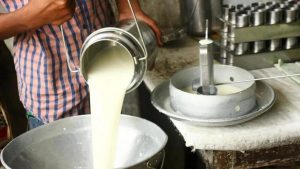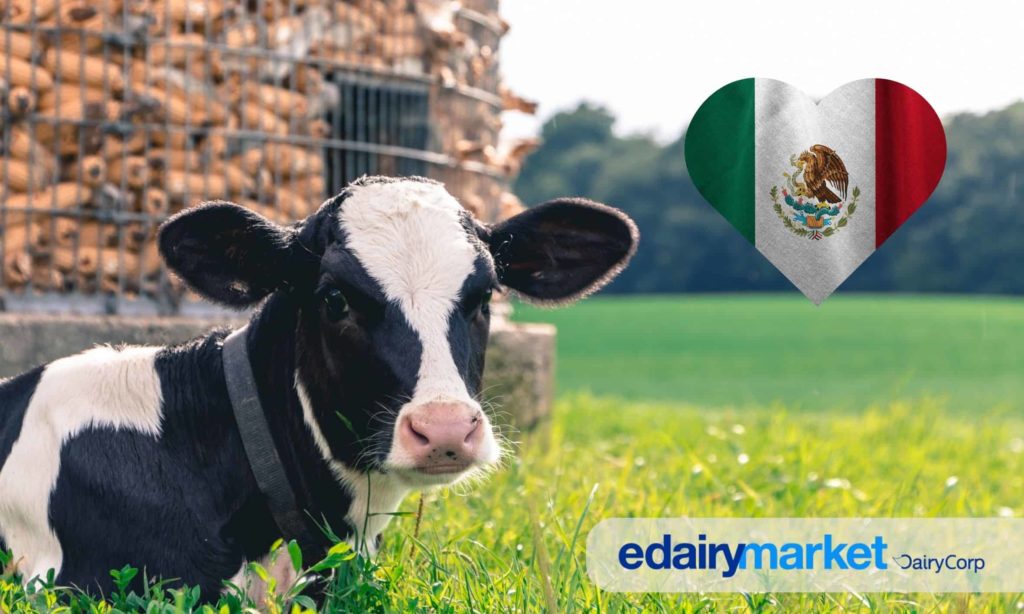
In an insightful conversation with Adgully, Arvind Ramachandran, Vice President – Marketing, Dairy Day, shares his extensive experience in the fast-moving consumer goods (FMCG) sector.
With a background spanning sales and marketing across home care, personal care, and a D2C startup, Ramachandran offers a nuanced perspective on the shifting dynamics of the Indian consumer market. He delves into the critical challenges and abundant opportunities facing the FMCG industry today, with a particular focus on the fiercely competitive ice cream segment.
How has your experience been in the FMCG sector? What are some key challenges and opportunities you see in this industry, particularly in a competitive landscape like the ice cream market?
I’ve had the good fortune of working across both sales and marketing in the FMCG sector. From a marketing standpoint specifically, I’ve had the opportunity to work across both the home care and personal care divisions—managing portfolios that cater to both value-conscious consumers as well as premium segments, including the top 1–2% of households. That range of exposure has definitely shaped my perspective. I also had a stint at a D2C startup before moving into my current role, and that experience has added a lot of value as well.
In terms of what’s changed—or the challenges and opportunities that now present themselves—a few key things come to mind. The first time I took on a marketing role, around nine years ago, the biggest challenge was figuring out how to win on Amazon or BigBasket. Quick commerce didn’t even exist back then. Our biggest shift at the time was moving from traditional TV advertising to YouTube & Facebook – Instagram wasn’t yet the force it is today & OTT platforms hadn’t become mainstream.
Cut to today, and the importance of content, alternate media, and new-age distribution channels has grown exponentially. This shift has transformed how the entire ecosystem functions across categories.
Post-COVID, we’ve clearly seen a K-shaped recovery. On one end, we have households that have grown more affluent, and we see the emergence of hyper-targeted, online-only brands that operate in niche geographies, catering to a very small consumer base—sometimes just 0.1% of households. This has led to significant fragmentation across brands, categories, and media platforms.
Meanwhile, at the other end of the spectrum, regional brands have expanded their footprint. These brands are often closer to the consumer and are far more agile in how they respond with tailored offerings. While these trends have been evolving for a while, COVID certainly accelerated both.
The implications are far-reaching—cutting across geographies, categories, and consumer segments. That’s what makes the landscape so interesting right now. Even in the ice cream category, we’re seeing these shifts play out. Quick commerce is growing rapidly, and historically, ice cream has also been a category with strong regional players across the country. In many ways, it mirrors the broader dynamics we’re observing across FMCG.
Considering Dairy Day’s presence in South and West India, what strategies would you recommend to further strengthen its brand recognition and market share specifically in the West market?
Traditionally, what has worked well for Dairy Day is our deep regional presence, wide assortment and consistency in ensuring access. We’ve been around for more than 22 years now, and we are a prominent player in the South—with particularly strong penetration and market share in Karnataka and Tamil Nadu, and a rapidly growing presence in Andhra Pradesh, Telangana, and Maharashtra.
From the outset, our tight control over product quality has been a key differentiator. It’s one of the primary reasons consumers continue to come back to us even today. We’ve been able to offer access and value across a wide assortment, in a category that is inherently impulsive—where consumers are seeking variety, but at the same time, don’t want to spend heavily with every purchase. This balance has worked exceptionally well for Dairy Day.
In the geographies where we’re strong, our physical footprint has also helped us stay close to key catchment areas—be it in large cities or smaller towns and districts. In any given locality, there might be 10 retail outlets, but not all of them will stock ice cream. If only two do, and we’re one of them, it puts us closer to the consumer than most other brands. That proximity plays a big role in our success.
As we now look to strengthen our business and expand into newer regions, we’re focused on doubling down on the basics, no matter which geography we enter.
At the same time, our task is also to make the Dairy Day brand more distinctive—to build stronger mental imagery and mental availability so that consumers in new markets recognize us instantly, even if they haven’t purchased from us before.
That’s the journey we’re on—staying true to our core strengths while adapting to the nuances of each region in order to serve consumers in the most relevant and effective way possible.
Describe a time when you had to adapt a marketing campaign or sales strategy to suit the specific nuances of a regional market. What were the key considerations and outcomes in that situation, and how might this experience inform your approach to the West market for Dairy Day?
Rather than naming specific brands, I think it’s more useful to share some broader context from my experience. While working in the home care category, for instance, we developed a portfolio specifically designed for Andhra Pradesh and Telangana—which at the time served as a test market. That approach eventually helped us prove & then scale the offering across the southern region.
Similarly, during my stint in personal care, I worked on regional brands that had deep cultural roots in geographies like Tamil Nadu and Maharashtra. These were brands that had been integrated into the cultural fabric of the state over several decades, and that legacy significantly influenced consumer loyalty and preference.
Even in my previous role in the meat & seafood category, the regional dimension is hard to miss. Food preferences are inherently hyper-regional, and this is especially true when it comes to meat consumption—where strong cultural and regional nuances play a defining role.
Across these experiences, I’ve drawn a few key insights:
Communication must be designed for the geography, not just translated. One common misstep is to think through an idea in a language we’re most comfortable in—say, English—and then simply translate it into Tamil, Telugu, or Kannada. This rarely works effectively. It’s absolutely critical for brands to think in the language of the consumer and design communication that resonates contextually and emotionally with the target geography.
Consumer preferences vary significantly by region—even within the same category. Whether it’s personal care or skincare, the relevance of these categories or product attributes differs sharply depending on where they are. In some regions, traditional or “Indie” solutions are deeply valued and newer formats may take longer to gain traction. In others, consumers are more open to experimentation and quicker adoption of newer trends in skincare or haircare. These differences are not a matter of one being better or worse—they simply reflect diverse regional interpretations of beauty and self-care.
The perception of value—and price points—changes across regions. A ₹20 or ₹30 SKU can mean vastly different things to a consumer in the South versus one in the West or East. This has direct implications for product design, packaging, pricing, and positioning. For example, flavor or variant preferences, language of communication, or even the visual appeal of the pack can determine how close the brand gets to the consumer compared to others.
Ultimately, I believe these principles cut across categories—whether you’re in home care, personal care, or F&B. The challenge is to stay deeply attuned to regional context, and to use that understanding to drive relevance and affinity.
How competitive the ice cream market in West India is compared to the South? Could you identify key players, their strengths and weaknesses, and potential areas where Dairy Day could differentiate itself?
The West market for ice cream is, as is widely known, exceptionally competitive and geographically expansive. This region consistently records one of the highest per capita consumptions of ice cream in the country—a trend that has held true historically. The West is also home to well-entrenched brands with deep consumer equity. Naturally, this makes it both an exceptional opportunity and an interesting challenge for any brand operating in the ice cream category.
That said, regardless of the region we look at, it’s important to remember that ice cream, as a category, is still underpenetrated in India. It’s far from reaching universal consumption, and the real driver of future growth will be increased penetration and rising per capita consumption. Even today, our per capita consumption is significantly lower than in many Western or even Asian countries.
This is a category that is poised for strong growth—projected to expand at 13–15% CAGR over the next 7–10 years—and that growth will be pan-India, not restricted to any one geography. So, no matter the competitive dynamics of a particular region, growth is on the table for brands that can get the fundamentals right. As discussed earlier, that means ensuring we serve consumers meaningfully in each region and ensuring we’re available as close to the consumer as possible. We will need to retain our core strengths around product quality, assortment, affordability, and accessibility. We will need to maintain a strong presence in catchment areas at the local retail level. If we can do all that consistently, we believe we can win across geographies and build our footprint steadily and sustainably, no matter where we go.
Dairy Day recently partnered with BlinkIt for a May Day initiative. How do you see the role of quick commerce platforms in expanding the reach and accessibility of ice cream brands, particularly in urban centers within the West and South markets? What other innovative distribution or partnership strategies could Dairy Day explore?
I think Quick Commerce is a particularly exciting channel for the ice cream category, largely because there are two forces at play here.
First, unlike categories like soap or detergent, ice cream is a product that melts. So, the closer the point of purchase is to the point of consumption — typically the consumer’s home—the more relevant the channel becomes. This is also why general trade remains so important for ice cream, as neighborhood stores are physically close to the consumer. You simply walk in, grab a bar, and move on. So proximity to households is absolutely critical.
The second factor is that ice cream is inherently an impulse-driven category. Here, assortment matters a lot — the number of variants and choices available plays a huge role. Consumers enjoy browsing, discovering, and indulging in different options.
What Quick Commerce uniquely does is solve both of these challenges. It eliminates the distance between the product and the consumer by bringing the store effectively to your doorstep. At the same time, it offers a kind of “endless aisle” experience, where consumers can keep scrolling and discovering new flavors or formats that appeal to them. That’s why Quick Commerce has taken off across categories—but even more so in ice cream, because it directly addresses how consumers engage with the category.
With rising temperatures and a tendency for consumers—especially those already familiar with QCom—to avoid stepping out, we’re seeing increased traction in both Tier 1 metros and Tier 2 and Tier 3 towns, across the South and West. Buying ice cream on QCom is a behavior that will only accelerate from here. And since ice cream is still an under-consumed category in India, Quick Commerce isn’t just a new distribution channel—it’s actually unlocking incremental growth for the category.
However, the consumers we reach on QCom are very different from those we reach offline. The brands that win online, their market shares, and even their use cases, can be significantly different. In fact, newer formats and variants exist exclusively on QCom. This means that our offline portfolio alone isn’t enough to win in this space.
So we must invest in innovation tailored specifically for Quick Commerce—that’s a key pillar for success. Equally important is the brand-building we do on these platforms. For instance, our recent campaign was a small step in that direction, and we intend to continue creating campaigns not just with platform partners but as a broader brand effort.
Ultimately, anything that supports our brand proposition and resonates with QCom-first consumers through engaging, relatable content will help strengthen our presence. This is a space we’re committed to exploring further—with a mindset of experimenting, learning, and growing.
Imagine you are tasked with launching a new Dairy Day product line specifically targeting consumers in the West market. What key factors would you consider in terms of product development, pricing, packaging, and promotion to ensure its success?
I won’t be able to give it all away, of course, but the fundamentals of what we need to get right remain the same, whether we are operating in the West, North, East, or anywhere else. At its core, we have to serve consumers better—and that means we can’t simply lift a successful template from one region and apply it to another.
Consumer preferences vary by geography—whether it’s the variants they prefer, the pack formats they choose, or the role of different formats based on how frequently ice cream is consumed in that region. For example, regions with higher consumption levels will demand different format strategies, and we’ll need to adapt accordingly.
Channel dynamics will also differ. Quick Commerce, for instance, functions very differently in a Tier 2 town compared to a city like Mumbai, Pune, or Ahmedabad. These nuances in distribution and consumption behavior must be solved thoughtfully as we expand beyond our traditional strongholds.
While we’re already present in the West and have a footprint in parts of the East, we know that consumption occasions themselves also differ by region. The moments when people tend to reach for ice cream—festivals, seasons, or cultural habits—can look quite different in the North or West compared to the South.
All of these insights present meaningful opportunities. Our task is to experiment, learn, and build on these differences as we continue to strengthen our presence across new geographies.
You can now read the most important #news on #eDairyNews #Whatsapp channels!!!
🇮🇳 eDairy News ÍNDIA: https://whatsapp.com/channel/0029VaPidCcGpLHImBQk6x1F

















